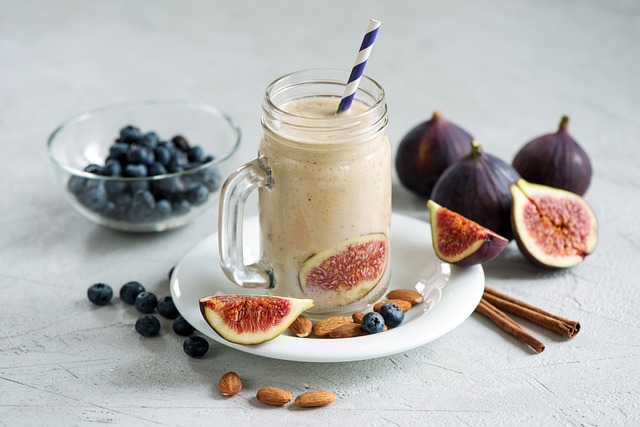When you’re dedicated to fitness, nutrition is key. The right foods provide the fuel to power your workouts and build lean muscle. What you eat also aids recovery, so your body is primed for the next training session.
It’s important to choose foods that deliver the optimal macros—protein, carbs, and healthy fats. Two popular options for fitness nutrition are shake meals and traditional whole foods.
This article compares the pros and cons of each approach. Learn when it’s ideal to enjoy shakes versus home-cooked meals on your fitness journey. Discover how to incorporate both strategically to meet your goals.
With the right nutrition game plan, you can energize your active lifestyle and take your training to new levels.
Shakes Provide Easy Nutrition
Meal replacement and daily essentials nutrition shakes offer an uncomplicated way to get balanced macro and micronutrients. They deliver a fast infusion of carbs for energy plus ample protein for muscle growth and recovery.
You’ll also get nutrients, often including added vitamins, minerals, and antioxidants. With minimal prep time, shakes make a convenient option to refuel post-workout or grab breakfast on the go.
You do need to read labels to verify protein content and quality ingredients. Look for at least 15-20 grams of protein, healthy fats, fiber, and no added sugar. Watch out for highly processed ingredients. Stick to familiar whole foods in the mix, like milk, nuts, fruits, and greens, for better nutrition.
Whole Foods Offer More Satiety
Nothing beats the classic nutrition power of whole foods. Fruits, veggies, eggs, meat, fish, beans, nuts, seeds, and whole grains provide complete proteins, quality carbs, healthy fats, and abundant vitamins and minerals.
Home-cooked meals let you control ingredients and portions to hit your targets. Whole foods also supply more satiety from ample fiber, protein, and the chewing process. This helps curb hunger between meals.
Cooking does take more time than grabbing a shake. Meal prepping can help by getting breakfasts, lunches, and snacks ready for the week ahead. Emphasize nutrient-dense picks like oats, eggs, salads, lean proteins, and low-sugar fruits and veggies. Pair with healthy fats from oils, nuts, and seeds for sustained energy.
Customizing Your Nutrition
With shakes, you’re limited to what comes in the package, besides adding a few supplements like protein powder or nut butter. Whole foods allow endless combinations to tweak your macros.
For example, emphasize extra protein and healthy fats on workout days, then higher quality carbs on rest days. You can also adjust calories and portions day-to-day based on your schedule and hunger cues.
Shakes Are Portable
One of the biggest upsides of shakes is portability. They require minimal prep, and you can sip one almost anywhere—at your desk, in the car, between workouts, or on the go. This convenience makes it easy to get nutrition at key times.
Packed with protein, carbs, and nutrients, a post-workout shake efficiently refuels and aids recovery. A morning shake can provide balanced fuel to start your day off right.
With whole foods, it helps to have access to a fridge and microwave. Preparing real food generally needs more planning, such as packing meals and snacks. But you have endless healthy options—yogurt, eggs, fruits, proteins, veggies, nuts. Invest in some grab-and-go containers, and you can take nutrient-packed meals and bites with you.
Avoiding Pitfalls
Watch out for shakes with lots of added sugars, unrecognizable chemicals, and artificial flavors or sweeteners. These provide empty calories without nutrition. Some brands skimp on protein or use cheap processed ingredients. Do research to find high-quality shakes with minimal junk.
With whole foods, steer clear of fried and heavily processed options that are high in bad fats, sodium, and added sugar. Stick to mostly whole, minimally processed picks like fruits, veggies, lean proteins, eggs, nuts, and whole grains. Unhealthy fats and excess carbs from junk foods can sabotage your fitness nutrition.
Cost Considerations
Shakes can seem like an inexpensive way to get easy nutrition. But per serving, their cost is often similar to whole foods, especially if you make meals yourself. Check the serving sizes and nutrition labels when comparing prices. Some shakes skimp on protein or rely on processed ingredients. Higher-quality brands with ample protein and nutrients may cost more.
Buying whole food groceries takes meal planning and smart shopping for deals. But base meals around economic staples like eggs, rice, oats, beans, frozen fruits and veggies. Cook extra portions for leftovers. With practice, you can keep your grocery budget in check and enjoy tasty, nutritious, real food.
Final Thoughts
There’s no one right answer—both shakes and whole foods can have a place in your fitness nutrition plan. Shakes provide portable, uncomplicated nutrition for recovery, breakfast, or snacks. Home-cooked whole-food meals deliver superior satisfaction plus around 200 to 300 calories per meal.
Aim for balance based on your needs and schedule. Use shakes strategically—not to replace all meals. Structure meals around quality proteins, fruits/veggies, and whole grains. With smart nutrition choices, you’ll fuel and refuel your body to meet your fitness goals.




